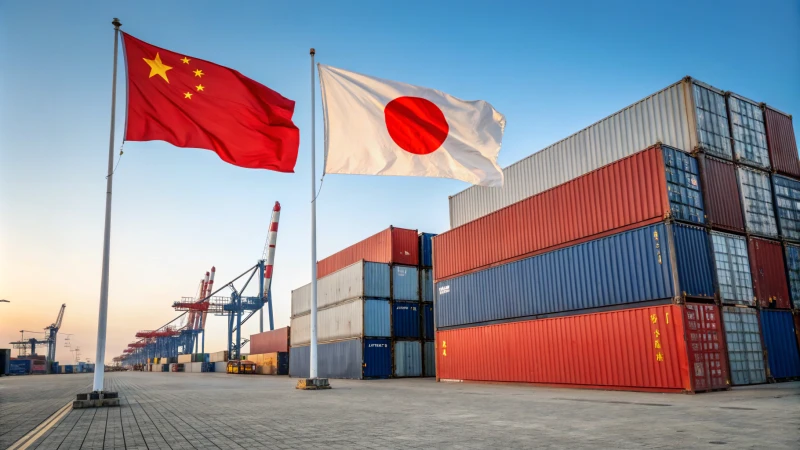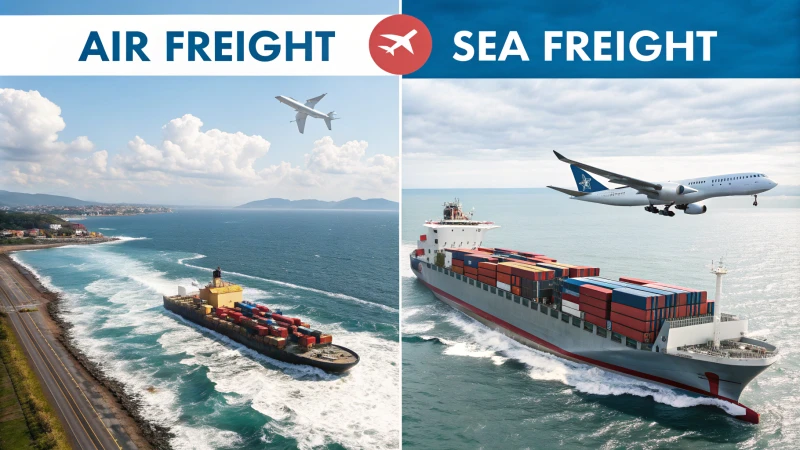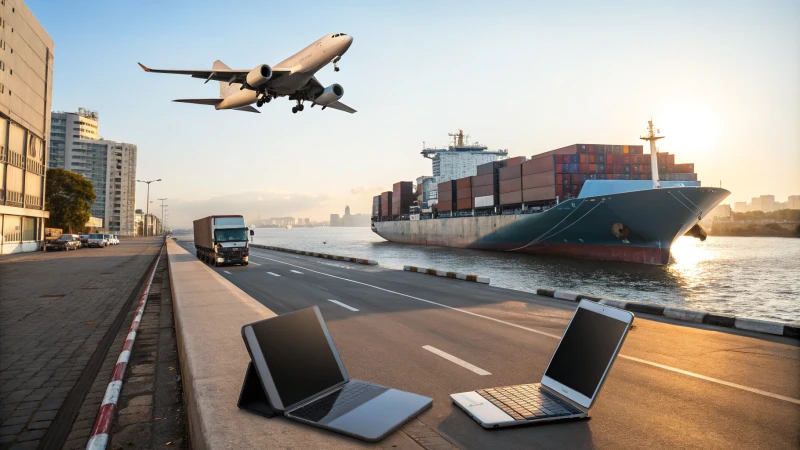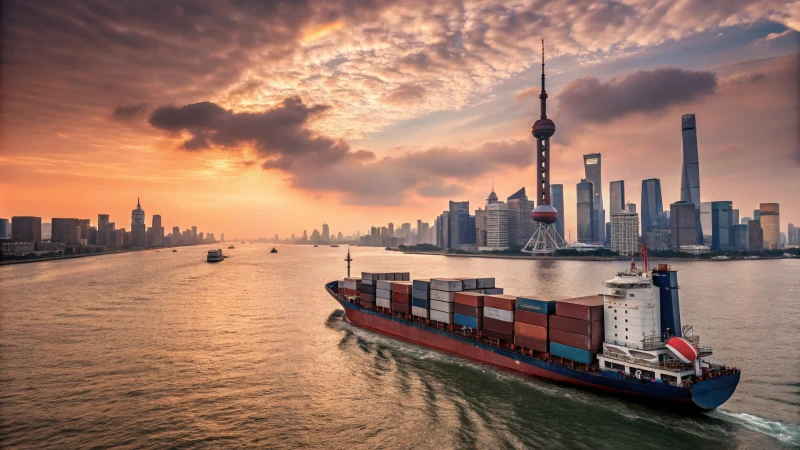Shipping goods from China to Japan might seem daunting, but with the right guidance, it can be surprisingly smooth. Let me walk you through it!
Shipping from China to Japan involves selecting between air, sea, express, or EMS options based on cost, speed, and cargo size. It's crucial to grasp customs regulations and prepare proper documentation to ensure a hassle-free process.
I remember when I first started shipping goods from China to Japan. It felt like being dropped into an intricate puzzle with pieces like air freight and sea freight all waiting to fit perfectly. Initially, the choices seemed overwhelming, but breaking them down helped me navigate them smoothly. Whether you need speed or cost-efficiency, there's a shipping option for you.
Understanding the specifics—like transit times and costs—made all the difference in my logistics journey. With air freight typically taking 1-3 days and sea freight around 7-15 days, I learned to plan around these timelines based on urgency and budget. Knowing the ins and outs of customs regulations saved me from unexpected delays too. It's like learning a new language; tricky at first but rewarding once you get the hang of it.
Air shipping from China to Japan is the fastest option.True
Air shipping offers the quickest transit times compared to sea or land.
Customs regulations are identical in China and Japan.False
China and Japan have distinct customs regulations requiring specific documentation.
How Do Customs Regulations Impact Shipping from China to Japan?
Ever tried navigating customs? It's like piecing together a puzzle where each piece is a rule or a fee. Let me share my journey from China to Japan.
Customs regulations influence shipping from China to Japan by affecting import duties, necessary documentation, and compliance standards. Businesses must follow these rules to prevent delays and avoid extra costs.

Understanding Customs Duties and Taxes
When I first started importing goods from China to Japan, the customs duties and taxes were like a complex math equation I had to solve. These fees depend on the customs value1 of the goods, which includes the cost of the products, insurance, and freight. The duty rate changes depending on the product type, and getting it right was crucial to avoiding any unexpected costs.
Required Documentation
I quickly learned the importance of having all my documents in order. It felt like assembling a jigsaw puzzle: each piece had to fit perfectly. The key documents I needed were:
- Commercial Invoice: This detailed the transaction between me and my supplier.
- Bill of Lading: Served as my receipt for the shipment.
- Packing List: Listed every item included.
- Certificate of Origin: Proved where the goods came from.
Missing any piece could lead to delays or fines, so I made sure to double-check everything before shipping.
Compliance Standards
Japan's strict compliance standards felt like a high hurdle at first, especially for electronics and textiles. Ensuring that my products met Japanese quality standards2 and safety regulations was non-negotiable if I wanted smooth entry through customs.
Special Considerations for Shipping Methods
Choosing the right shipping method wasn't just about speed; it impacted how customs regulations applied too. Here's what I found:
| Shipping Method | Typical Transit Time | Cost Range |
|---|---|---|
| Air Freight | 1-3 days | Varies with airline routes |
| Sea Freight | 7-15 days | FCL: $1,500-$2,000 |
| Express Shipping | 2-5 days | $25-$40 |
Each method had its own pros and cons3, influencing speed, cost, and customs processing.
Strategies to Simplify Compliance
To make my life easier and avoid customs headaches, I adopted a few strategies:
- Partnering with experienced customs brokers who knew both Chinese and Japanese regulations like the back of their hands.
- Investing in customs software that automated most of my documentation processes.
- Keeping myself updated on regulatory changes by subscribing to trade newsletters.
These steps helped me navigate customs more smoothly, reducing risks and maximizing efficiency in my shipping operations.
Customs duties are based on product type.True
The rate of duty varies depending on the type of product being imported.
Air freight has the longest transit time.False
Air freight typically takes 1-3 days, shorter than sea freight.
What Are the Cost Differences Between Air and Sea Freight?
Ever been torn between choosing air or sea freight for your shipments?
Air freight is typically more expensive than sea freight, offering speed over cost. It's ideal for small, urgent shipments, while sea freight suits larger loads at a more economical rate. Consider your shipment's size and urgency to make the best choice.

Understanding Air Freight Costs
I remember when I first started in the import/export business; I was astounded by how quickly air freight could deliver my goods. It's like ordering pizza and getting it delivered before you've even set the table! The costs, though, can be a little shocking if you're not prepared. Air freight pricing is mainly based on the weight and volume of the cargo. For those precious, high-value items that absolutely must get there yesterday, it's a lifesaver. For example, express shipping4 via carriers like DHL or FedEx typically costs around $25 to $40 USD per kilogram.
Sea Freight Pricing Structures
On the flip side, when I had a larger shipment that wasn’t as time-sensitive, sea freight was a no-brainer. Think of it as a leisurely cruise for your cargo. Sea freight is perfect for those hefty shipments that would otherwise make your wallet cry if sent by air. The costs can vary based on whether you need a Full Container Load (FCL) or Less than Container Load (LCL). Generally, FCL might set you back $1,500 to $2,000 for a 20-foot container, while LCL is estimated at $30 to $40 per cubic meter.
| Freight Type | Cost Estimate | Delivery Time |
|---|---|---|
| Air Freight | $25 to $40/kg | 1-3 days |
| FCL | $1,500-$2,000 | 7-15 days |
| LCL | $30-$40/cbm | 7-15 days |
Factors Influencing Cost Differences
Several factors impact the cost differences between air and sea freight:
- Speed: Air freight is faster but comes with a higher price tag compared to its sea counterpart.
- Volume: Larger shipments are just more cost-effective by sea.
- Urgency: If you're racing against time, air transport is your go-to.
Consider using sea freight for bulk items5 that aren't time-sensitive and opt for air when speed is essential.
Environmental Impact Considerations
I've noticed more businesses are becoming environmentally conscious these days. Although not directly tied to cost, the environmental impact is a significant consideration. Air freight tends to have a larger carbon footprint compared to sea freight. So, for companies looking to minimize their environmental impact, sea shipping6 might be the greener choice.
For further insights into aligning your shipping strategy with business goals, explore logistics solutions7 that cater to specific needs and cost constraints. With this knowledge in hand, you'll be well-equipped to choose the method that best fits your budget and logistical priorities.
Air freight is more cost-effective for large shipments.False
Sea freight is more economical for larger shipments due to volume efficiency.
Sea freight has a lower carbon footprint than air freight.True
Sea freight emits less CO2 compared to air transport, reducing environmental impact.
Which Shipping Method Is Best for Consumer Electronics?
Ever tried shipping electronics and worried they might end up as a jigsaw puzzle? Picking the right shipping method is like choosing the right umbrella for a stormy day—it can save you from a lot of trouble.
For shipping consumer electronics, air freight is your best bet for speed and security, while express services excel at efficient handling of smaller packages. Sea freight is cost-effective for larger shipments. Always weigh package size, urgency, and budget to make the best choice.

Air Freight: Speed and Security
Imagine needing to send a batch of high-end laptops across the globe in the blink of an eye. That's where air freight8 swoops in like a superhero. I've relied on it when time was tight and the stakes were high. It's incredibly fast, typically landing your goods within 1-3 days, depending on the route. Airlines are particularly careful with electronics, following procedures designed to minimize damage, which gives me peace of mind. However, this service doesn't come cheap, so it's a choice I reserve for urgent deliveries.
Pros:
- Speed: Perfect for when you're racing against the clock.
- Security: Specialized handling reduces the risk of damage.
Cons:
- Cost: Higher than other options, making it a premium service.
Sea Freight: Cost-Effectiveness for Bulk Shipping
Sea freight is like the trusty friend who helps you move house—reliable, strong, and won’t break the bank. I remember the first time I sent a full container of gadgets; the cost savings were significant compared to air freight. While it takes longer (7-15 days), it’s perfect for bulk shipments that aren't time-sensitive. Options like Full Container Load (FCL) and Less than Container Load (LCL) provide flexibility based on shipment size.
Pros:
- Cost: A wallet-friendly option for large shipments.
- Versatility: Handles large volumes with ease.
Cons:
- Time: Patience is key with longer transit times.
Express Shipping: Efficiency for Smaller Packages
When I have a smaller package that needs to get there fast but without the air freight cost, express shipping services like DHL, UPS, and FedEx are my go-to. These guys offer an impressive balance, delivering within 2-5 days and providing door-to-door service—how convenient! It's a reliable method that's saved me from countless headaches.
Pros:
- Quick Delivery: Faster than sea freight but lighter on the pocket than air freight.
- Convenience: The whole process is as smooth as butter with door-to-door service.
Cons:
- Cost: More expensive per kilogram than EMS or sea freight for smaller packages.
EMS: Balancing Cost and Time
When neither speed nor size is critical, EMS9 strikes a great balance between cost and time. With delivery times of 5-8 working days, it's perfect for small to medium-sized shipments where reliability matters most. I've found EMS to be a solid choice when I don't need lightning-fast delivery but still want to avoid snail mail delays. Plus, its global reach ensures that my packages are covered no matter where they're headed.
Pros:
- Affordable: Easier on the budget than express shipping while maintaining reliability.
- Global Reach: Widely accessible, covering most regions effectively.
Cons: - Speed: Not the fastest out there but definitely beats standard post. | Shipping Method | Speed | Cost | Ideal For | |-----------------|----------------|--------|------------------------------| | Air Freight | 1-3 days | High | Urgent and secure deliveries | | Sea Freight | 7-15 days | Low | Bulk and non-urgent needs | | Express | 2-5 days | Medium | Quick smaller shipments | | EMS | 5-8 days | Medium | Moderate speed/cost balance | Choosing the right shipping method can be like navigating a maze, but once you find your way through, it becomes much easier to manage your logistics efficiently.I hope my insights help you make an informed choice for your next electronics shipment.
Air freight is the fastest shipping method for electronics.True
Air freight typically delivers in 1-3 days, faster than other methods.
Sea freight is more expensive than air freight for bulk shipments.False
Sea freight is cost-effective for bulk shipments, unlike expensive air freight.
Conclusion
Shipping from China to Japan involves choosing between air, sea, express, or EMS methods while understanding customs regulations and documentation for a smooth logistics process.
-
Learn how customs value impacts duties and taxes to better estimate costs. ↩
-
Understand which standards your products must meet for successful importation. ↩
-
Explore how various shipping methods affect logistics decisions. ↩
-
Explore specific rates and services provided by express carriers like DHL or FedEx to understand their pricing models. ↩
-
Discover why shipping bulky items via sea can be more economical compared to air transport. ↩
-
Understand the environmental benefits of choosing sea freight over air, which might influence your decision. ↩
-
Learn about logistics providers that offer tailored solutions to fit specific business needs and budgetary considerations. ↩
-
Discover how air freight ensures fast, secure delivery with specialized handling procedures. ↩
-
Explore how EMS offers a balance between cost, speed, and global reach. ↩




